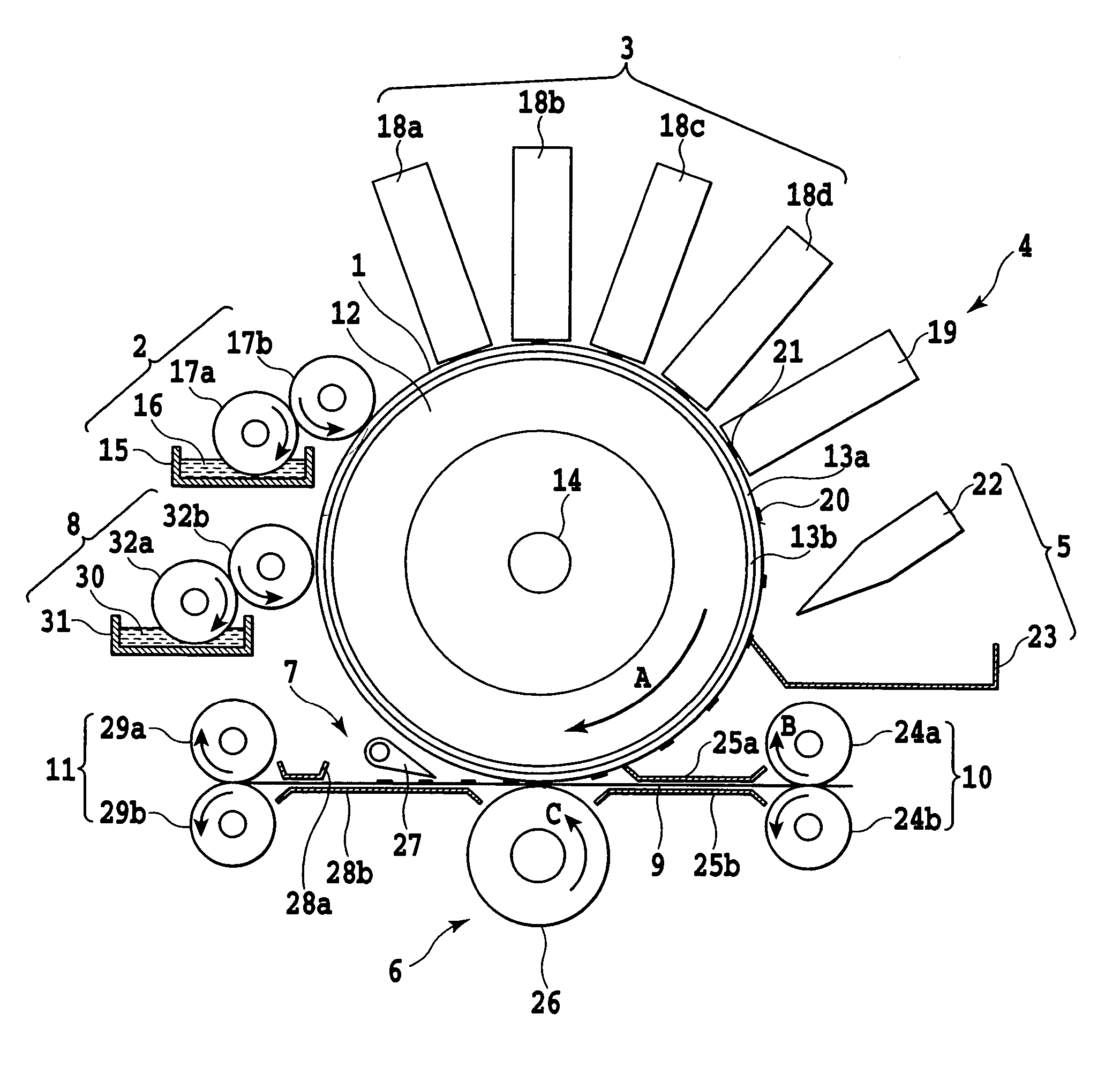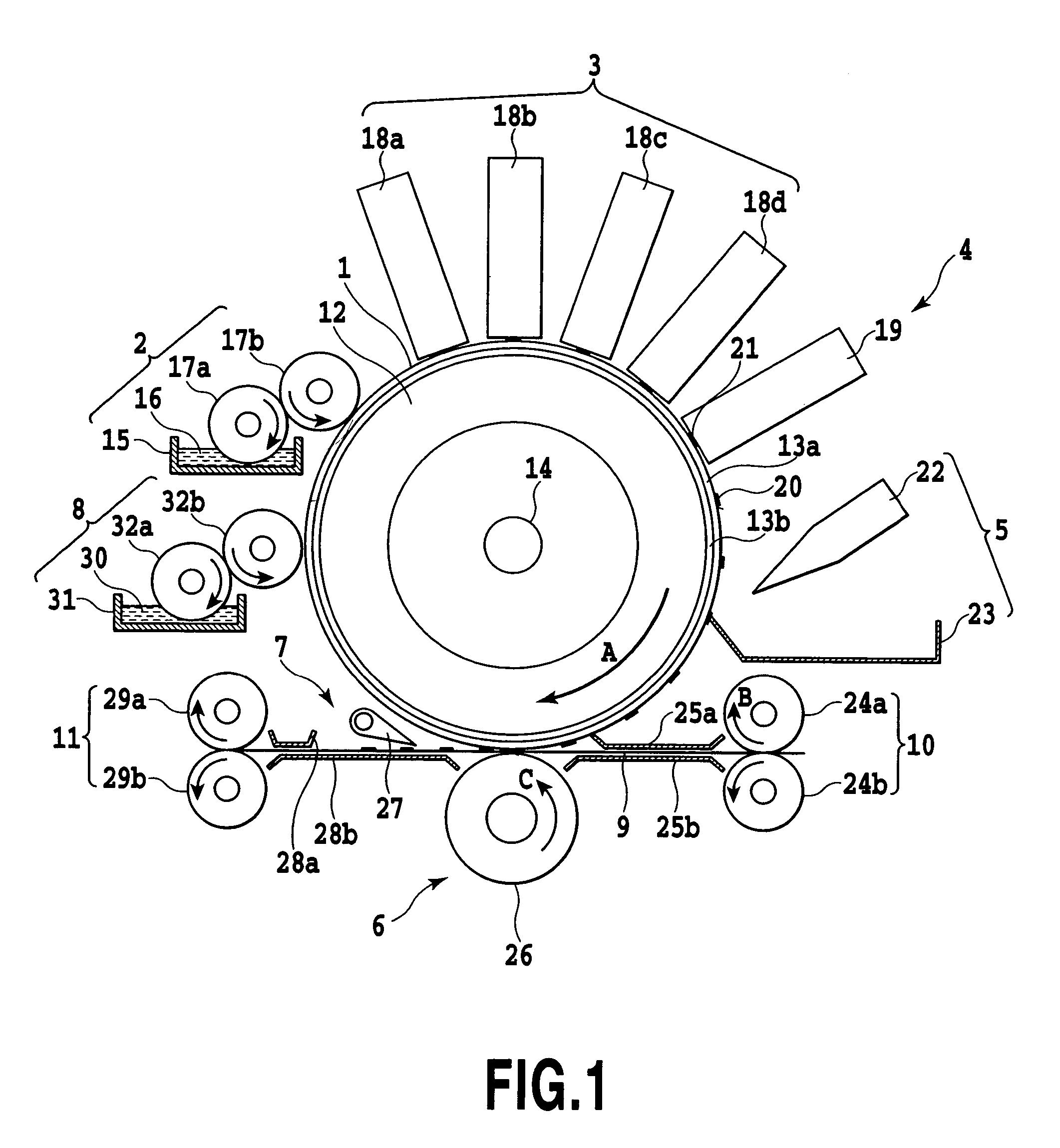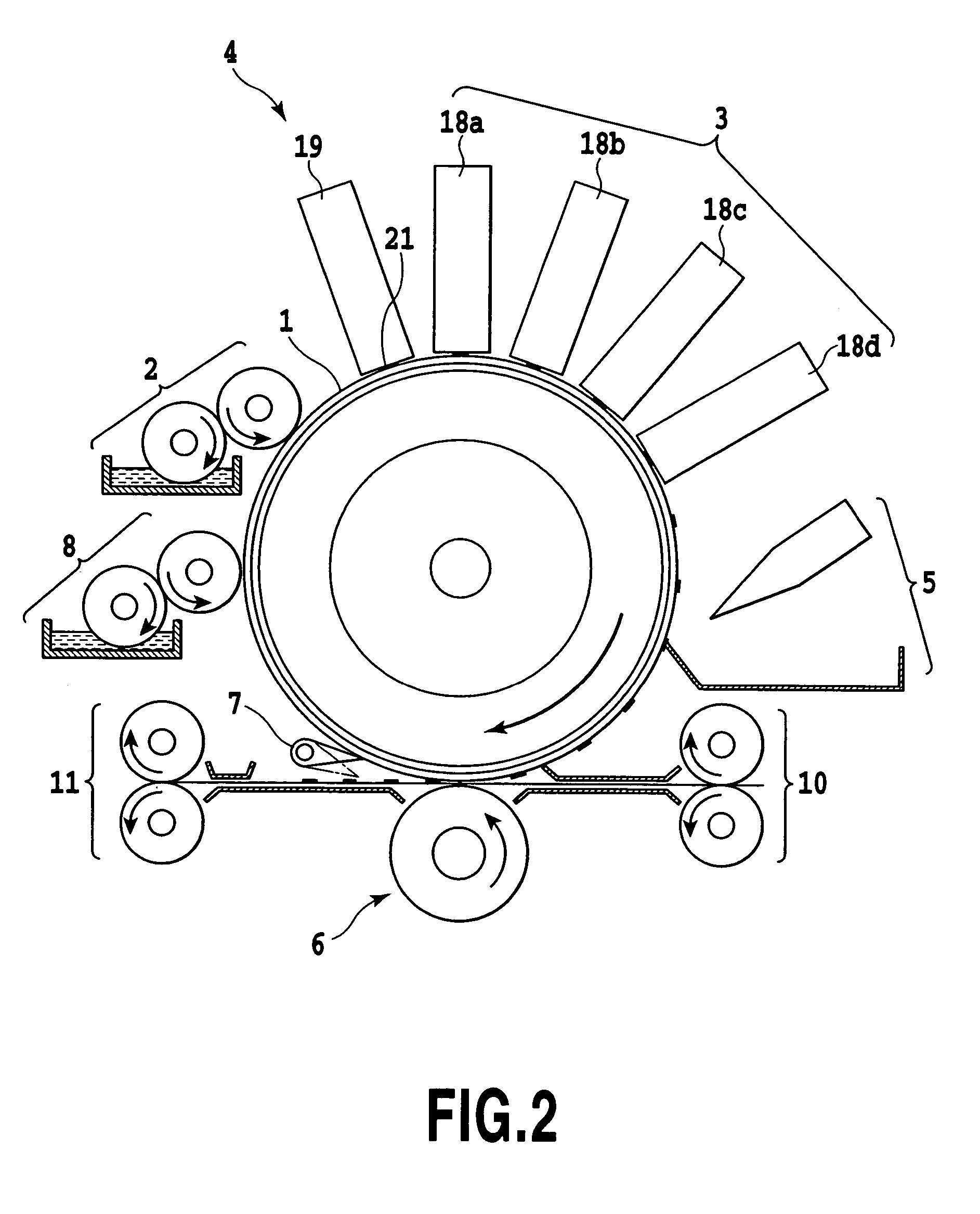Ink-jet recording method and ink-jet recording apparatus
a recording method and inkjet technology, applied in the direction of inks, duplicating/marking methods, printing, etc., can solve the problems of deteriorating image quality, large apparatuses, and difficulty in forming good images on regular paper or non-absorbing recording media, so as to improve image abrasion resistance, reduce flowability of coloring inks, and high quality images
- Summary
- Abstract
- Description
- Claims
- Application Information
AI Technical Summary
Benefits of technology
Problems solved by technology
Method used
Image
Examples
first embodiment
[0062]This embodiment applies a supplementary liquid to ink images formed on a transfer drum 1, after the transfer drum 1, i.e. an intermediate transfer body, is applied the inks of each color at an ink applying portion 3, by arranging a supplementary liquid applying portion 4 at down flow side of the ink applying portion 3.
[0063]FIG. 1 is a schematic sectional view showing a construction of the image forming portion of an ink-jet recording apparatus in accordance with an embodiment of the present invention.
[0064]In FIG. 1, the transfer drum 1 is an intermediate transfer body having a releasing surface layer. The transfer drum 1 is supported by an unshown shaft and can be rotatingly driven in the direction of the arrow A with an unshown drum driving device. Towards circumference of the transfer drum 1, an image fixing component coating portion 2, an ink applying portion 3, a supplementary liquid applying portion 4, an ink image treatment portion 5, a transfer portion 6, a recording ...
example 1
[0148]In the description blow, parts (pts) and % are weight-based unless otherwise noticed. Total amounts of both inks and image fixing components are adjusted with water to 100 parts.
[Preparation of Pigment Inks]
[0149]First, black, cyan, magenta and yellow pigment inks each containing pigment and anionic compounds were prepared as described below.
(Preparation of Pigment Ink K1)
[0150]
Styrene-acrylic acid-ethyl acrylate copolymer1.5 parts(acid value 240, weight average molecular weight = 5,000)Monoethanolamine1.0 partsDiethylene glycol5.0 partsIon-exchanged waterrest
[0151]The above-mentioned ingredients were heated in a water bath at 70° C. to dissolve the resin completely. To the solution, 10 parts of newly experimentally produced carbon black (MCF88, from Mitsubishi Chemical) and 1 parts of isopropyl alcohol were added, premixed for 30 minutes, and dispersion-treated under the condition described below.
[0152]
Dispersion machine:a sand grinder (from IgarashiMachinery)Grinding media:z...
second embodiment
The Second Embodiment
[0170]In the present embodiment, the supplementary liquid applying portion 4 is arranged between the image fixing component coating portion 2 and the ink applying portion 3, so that the supplementary liquid 21 is applied to the transfer drum 1 before the inks of each color are applied to the transfer drum 1 in the ink applying portion 3.
[0171]FIG. 2 is a schematic sectional view of an image formation portion of an ink-jet recording apparatus related to an embodiment of the present invention.
[0172]In FIG. 2, since devices indicated by reference numerals 1-11 and parts conforming them and a control portion (unshown) are same as those in FIG. 1, description of them is abbreviated.
[0173]In the figure, the supplementary liquid applying portion 4 is arranged between the image fixing component coating portion 2 and the ink applying portion 3. Of the series of operations of the ink-jet recording apparatus of the present embodiment, those that are same as in the first em...
PUM
| Property | Measurement | Unit |
|---|---|---|
| contact angle | aaaaa | aaaaa |
| surface tension | aaaaa | aaaaa |
| surface temperature | aaaaa | aaaaa |
Abstract
Description
Claims
Application Information
 Login to View More
Login to View More - R&D
- Intellectual Property
- Life Sciences
- Materials
- Tech Scout
- Unparalleled Data Quality
- Higher Quality Content
- 60% Fewer Hallucinations
Browse by: Latest US Patents, China's latest patents, Technical Efficacy Thesaurus, Application Domain, Technology Topic, Popular Technical Reports.
© 2025 PatSnap. All rights reserved.Legal|Privacy policy|Modern Slavery Act Transparency Statement|Sitemap|About US| Contact US: help@patsnap.com



